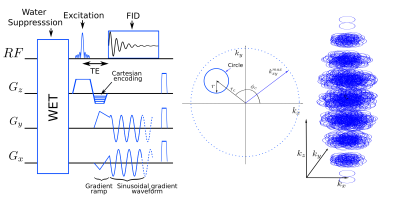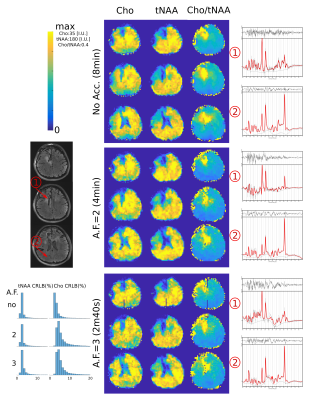Antoine Klauser1,2,3, Bernhard Strasser2,4, Wolfgang Bogner4, Lukas Hingerl4, Claudiu Schirda5, Bijaya Thapa2, Daniel Cahill6, Tracy Batchelor7, François Lazeyras1,3, and Ovidiu Andronesi2
1Radiology and Medical Informatics, University of Geneva, Geneva, Switzerland, 2Athinoula A. Martinos Center for Biomedical Imaging, Department of Radiology, Massachusetts General Hospital, Harvard Medical School, Boston, MA, United States, 3CIBM Center for Biomedical Imaging, Geneva, Switzerland, 4High‐Field MR Center, Department of Biomedical Imaging and Image‐guided Therapy, Medical University of Vienna, Vienna, Austria, 5Department of Radiology, University of Pittsburgh, Pittsburgh, PA, United States, 6Department of Neurosurgery, Massachusetts General Hospital, Harvard Medical School, Boston, MA, United States, 7Department of Neurology, Brigham and Women, Harvard Medical School, Boston, MA, United States
1Radiology and Medical Informatics, University of Geneva, Geneva, Switzerland, 2Athinoula A. Martinos Center for Biomedical Imaging, Department of Radiology, Massachusetts General Hospital, Harvard Medical School, Boston, MA, United States, 3CIBM Center for Biomedical Imaging, Geneva, Switzerland, 4High‐Field MR Center, Department of Biomedical Imaging and Image‐guided Therapy, Medical University of Vienna, Vienna, Austria, 5Department of Radiology, University of Pittsburgh, Pittsburgh, PA, United States, 6Department of Neurosurgery, Massachusetts General Hospital, Harvard Medical School, Boston, MA, United States, 7Department of Neurology, Brigham and Women, Harvard Medical School, Boston, MA, United States
We presented a new
trajectory: ECCENTRIC that enables the acquisition of high-resolution
MRSI without temporal interleaving and with random sparse sampling of
the Fourier domain for unrestricted axial brain coverage, which has
high potential for clinical applications.

Sketch of the FID-ECCENTRIC sequence. 4-pulses WET water suppression
precedes the excitation pulse. After the excitation, cartesian
encoding along z-axis and gradient ramp along x and y axes are played
before the acquisition simultaneous to the sinusoidal gradient
waveform. Right, the parametrization of the circle position and the
Fourier domain trajectory of ECCENTRIC for a 64x64x9 encoding matrix.

Choline (Cho), total NAA (tNAA) and ratio maps resulting from
ECCENTRIC FID-MRSI acquisition performed on a brain tumor patient.
Results from retrospective acceleration AF=2 and AF=3 show that the
tumor lesion and contrast was preserved through acceleration. Spectra
from the tumor location (1) and healthy tissue (2) are shown for all
AFs. Bottom left, histograms of the Cramer-Rao Lower Bound (CRLB) for
tNAA and Cho LCModel fit from the entire slab are presented.
